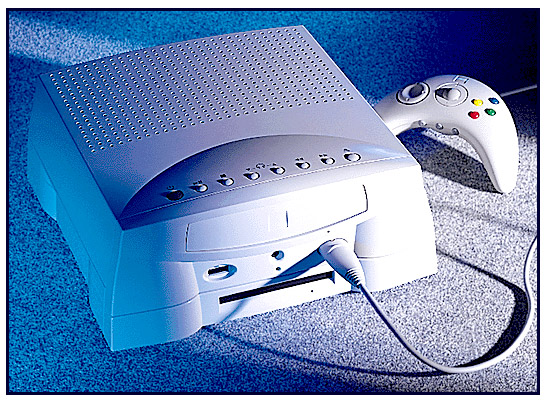| Alexander Graham Bell set out to invent a multiplex
telegraph and hearing aids for the deaf, but he found
lasting fame by inventing the telephone. Apple Computer
set out to design an interactive media appliance for homes
and schools, but it may have created the first network
computer (NC) instead. Strictly speaking, Apple's Pippin is not a product — it's a low-cost system architecture based on the Power Mac. Apple has no plans to manufacture Pippin devices. Instead, it is licensing the architecture to other companies. The first Pippin device is a low-cost multimedia system, manufactured by Bandai, the Tokyo-based corporation best known for introducing the Power Rangers into the world. Code-named the Power Player (but marketed in Japan as the @t Mark), the system is intended for home entertainment, education, and on-line communications. Bandai hopes to ship the Power Player to Japanese stores this month and introduce it to other world markets later this year. At the time we went to press, Bandai had not determined the retail price for the Power Player, but estimates it will be about $500. Bandai plans to bundle a modem in the package and launch a new information service that provides Internet access. Although Apple didn't design the Pippin to be the kind of NC envisioned by Oracle, Sun Microsystems, IBM, and others, the architecture has the flexibility, horsepower, and economy to meet all the requirements. Last December, Apple and Bandai demonstrated a Power Player browsing the World Wide Web with Netscape Navigator. The Pippin's biggest advantage is that it's not an entirely new platform. Developers can port thousands of existing Mac applications to the Pippin with relatively little effort. Essentially, developers have to modify their software to work with a system for which a keyboard, a hard drive, and a floppy drive are optional. On the Power Player, for instance, the primary input device is a hand-held game controller with a trackball. Developers also have to put some elements of the Pippin OS on their CD-ROMs. After an application is ported to the Pippin, it's upward-compatible with the Power Mac. It's even possible to produce a hybrid CD-ROM that runs on the Pippin, the Mac, and Windows PCs. In place of the familiar Mac Finder is whatever user interface developers choose for their applications. For example, if you're using a multimedia encyclopedia, the first screen you'll see is the encyclopedia's title screen. All Pippin titles run entirely from CD-ROM. All you'd have to do is supply a CD with a Java-enabled browser to turn the Pippin into a functional NC, and there would never be any software to install or maintain. The Bandai Power Player is more powerful than many desktop PCs. It contains a 66-MHz PowerPC 603 microprocessor; 6 MB of RAM (expandable to 38 MB; 2 MB are reserved for the OS and video); 4 MB of ROM (which contains the Mac OS Toolbox); a quad-speed CD-ROM drive; 640- by 480-pixel video with 8- and 16-bit color depths; NTSC, PAL, and VGA video outputs; 16-bit, 44-kHz audio output; two Mac-standard serial ports (one supports AppleTalk; the other is a GeoPort); two Apple Desktop Bus (ADB) ports; a Peripheral Component Interconnect (PCI)-compatible expansion slot for adding a hard drive or a floppy drive; and a stereo headphone jack. What's missing, compared to a Power Mac? There's no external SCSI port, no Ethernet port, no writable storage devices, and not as many expansion slots. The Pippin version of the Mac OS is also missing a few elements, such as the PowerTalk and QuickDraw GX extensions. "Fundamentally, in terms of architecture, the Pippin is a Power Mac," says Mark Orr, manager of business development for Pippin. It wouldn't take much to turn the Pippin into a formidable NC. However, Orr insists that hardware isn't the issue. "The talk about $500 is the wrong way to look at the problem," he says. "The biggest challenge will be to create content that is compelling enough to attract users to the Internet so they'll want to buy these boxes." For $500 You Get A Lot Copyright 1994-1998 BYTE |